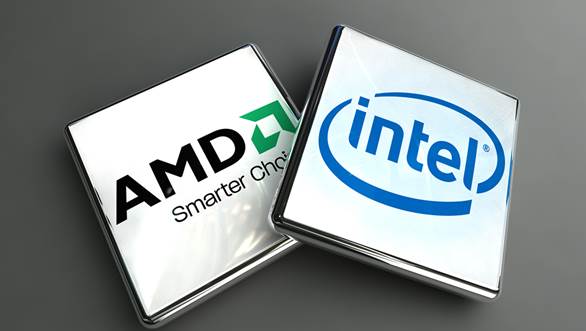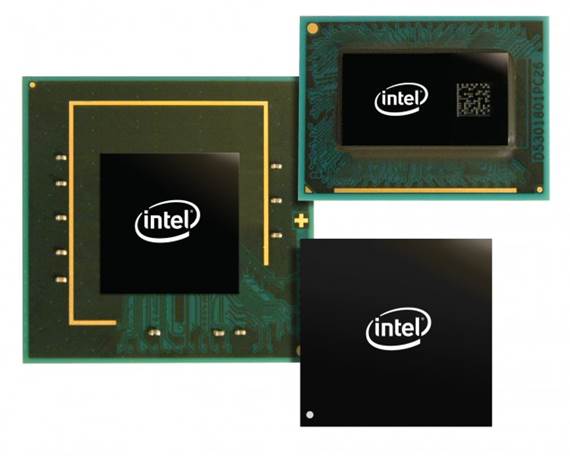Mark Pickavance looks at what you can get for a ton and
recommends the designs it’s worth spending on.
I'm old
enough to remember an era when $138 for a motherboard was a bargain and Charles
Babbage was a spotty youth.
Maybe a
mild exaggeration there, but the current cost of motherboards is still probably
the lowest it's ever been, and the choice of available designs is huge.
In this
feature, I'll talk about choosing the right board for you and come up with some
excellent examples of those that you can by right now.
AMD Vs Intel
Most people
buy a motherboard as part of a larger strategy, rather than looking inside
their computer and deciding that the one they've currently got looks dusty.

AMD vs Intel
There are
only two basic reasons to buy one: building a new system or fixing an existing
one. If you're fixing an existing computer, then exactly what type of board you
go for is going to be strictly dictated by the existing model, because of the
existing CPU and memory.
Those
building a new system are less confined, because they get the option to buy a
board that fits with the CPU they'd like to have and the case they'd like to
mount it into.
A useful
exercise I'd recommend anyone building a new PC should perform is to price the
system for both AMD and Intel, given you've some idea how powerful you'd like
it to be. Combine the price of motherboard and CPU, because that's the critical
number for your budget and might exclude one or more options.
You might
want to experiment with the idea of reducing the amount you spend on the CPU
for a better board, because unless performance is critical, you might
appreciate having a better overall build quality to your system.
In general
(and there are exceptions to this rule), AMD is a more cost effective choice,
because usually both the CPU and motherboard are cheaper for AMD platforms. But
if you want ultimate performance, then Intel is one to go for.
That said,
with just $138 to spend on a motherboard you're not likely to have huge amounts
to spend on a CPU, so functionality is probably the more critical factor.

Compare AMD with Intel
Depending
which chipset you focus on, you'll either find that you can have certain
features or not. This is especially true of multi-CPU graphics, where the
number of PCI lanes is important to enable that feature. Some chipsets don't
support multiple PCIe x16 slots with the full
bandwidth or even more than one slot, so be careful about buying a cheap
motherboard with the intention of growing a gaming system, because you might
run into a technical brick wall later.
All these things
said it's pretty impressive what you can buy for $138, if you make the right
choices.
Intel
Currently,
Intel makes a surprisingly large selection of chipset that cover its processor
range, which includes three socket standards as well as those processors that
come pre-mounted (like Atom).
At the top
of its retail product range is the X79 chipset designed for the LGA 2011 and
LGA 1366 processors. You won't see any of these covered below, because the very
cheapest is about $207, and processors for this cost much more than that.
However,
the next rung down is more favorable, because you can get Z87 and its H87, B85
and H81 'Lynx Point' brothers all on LGA 1150 socket for less than $138. You
can also still find those made for the previous LGA 1155 socket utilizing the
'Cougar Point' Z77, H77, B75, H67 and H61, and they're generally inexpensive.

Intel chipsets
What isn't
easy to find these days are motherboards for LGA 1156 or LGA 1366, as Intel
doesn't develop those platforms any more. If you've
got one of those and it has a broken motherboard, your best bet is eBay or to
bite the bullet to a complete CPU and motherboard upgrade.
By way of
explaining the difference between, say, a Z87 and a H81, I've created a small
table, outlining the critical factors which might explain the underlying
choices you'll be making.
Intel Lynx Point Chipsets
All parts
in this series support FDI and use the DMI 2.0 Bus Interface with a 4GB/s bus
speed. The slightly shocking thing is that these chipsets don't support PCI
3.0, because on the Haswell CPU this is done in the
processor, not the chipset.
As you can
see from this table, the differences are relatively small from Z87 to B85,
unless you like SATA 6Gbps and USB 3.0. But in terms of features, most
motherboard makers tend to stack the Z87 models, because those are the most
popular.
What can
also bend these figures is the addition of other SATA and USB 3.0 chips by the
board makers, which can add functionality to enable, say, a H81 board to have
more than two USB 3.0 ports.